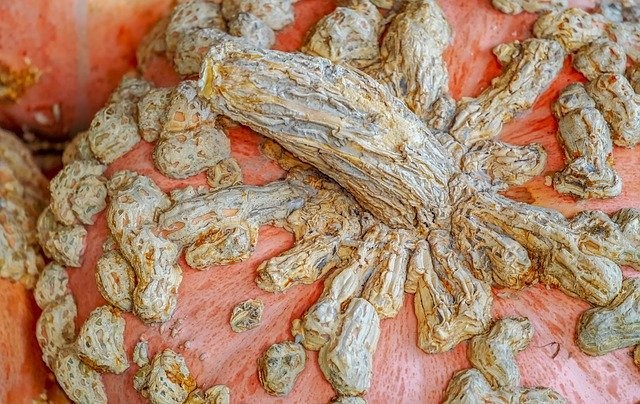Foot warts are often common in diabetic patients. They are extremely painful and appear to have small tiny black spots in the center.
Another name of foot warts is plantar warts, which develop in singly or in clusters. It is recommended to visit your doctor rather than using over the counter medicines (OTC) to dissolve your warts.
They are caused by a virus that infects the top layer of skin on the soles of the feet.
In this article, we will explore the link between diabetes and warts. The questions such as Are Diabetics Prone to Warts? And if so, Why Diabetics Prone to Warts? also will be answered. This article will also help you in recognizing moles, their manifestations and avoidance.
Let’s move on by defining what warts really are.
What are Warts?
Warts occur in the form of skin growth.
They are a very common infection caused by a type of the virus known as Human Papillomavirus HPV. It affects the top layer of the skin and usually enters through the broken areas of the skin.
Warts can grow rapidly anywhere on the body. Within months or years, they usually go away on their own.
Warts have different kinds and causes. Some of them are discussed below.
Classification of Warts – Types of Warts
The signs, symptoms and how warts look depend on the type of warts.
Warts, also known as moles, have 100 of sorts, but the main types of them are talked about in this article.
There are 8 types of warts, which are viral in general. They are usually classified according to their look and the place they are in the body.
In this article, I will take you through each kind of warts briefly.
1. Flat Warts/ Plane Warts:

Flat or Plane warts are smooth, flat and round in shape. They are of yellowish, brownish or skin color.
They are often seen in children’s hands, feet, legs and neck areas. They form clusters and tend to grow in insignificant numbers.
2. Common Warts:
They are also known as seed warts. The reason being called seed warts are that they may have small black or dark dots. These are clotted by blood vessels and form like seeds. They are the most common warts observed on the body. They can appear anywhere on the body and form a round cauliflower-like shape.

3. Plantar Warts:
Plantar Warts are also known as foot warts. They usually appear on the sole of feet, heel and toes. They can be extremely painful as the weight of the patient pushes onto the sole of the foot. Also, these warts have dark dots, surrounded by hard and white patches.
4. Mosaic Warts:
These warts are from the family of Plantar warts. They form close clusters in a small area onto the skin. Often when they are left untreated, they cause itching and spread to other areas too.
Soles of feet or palms of hands are affected by such warts, which also named as palmer warts.
5. Filiform Warts:
Another name of Filiform Warts is facial warts. They usually form in the neck, near the lips and eyelids and armpits areas.
They grow in clusters or groups. Having a long, thin thread-like structure which is of flesh-coloured. They cause irritation, itching and sometimes bleeding when they accidentally rubbed on clothing.
6. Periungual Warts
They are also known as subungual warts.
They develop around or under the nail or toe area of the feet. Their structure is rigid and is of cauliflower shape. Due to their location, they are extremely painful.
If they remain untreated for a long time, they cause severe damage to the nail bed. They continue to grow big and deform the nail. Often the nail has to detach from the nail bed to remove this type of warts.
7. Genital Warts:
Another name of genital warts is anal warts (when they are around the annus), Condylomata acuminate, anogenital, or venereal warts.
They are a sexually transmitted disease. Usually, they form a grainy cauliflower shape having flesh, Grey or off-white color. The uniqueness of these warts is that they cannot be observed with naked eyes. Therefore, they are likely to spread to other areas rapidly.
8. Oral Warts:
These warts are abnormal in nature, which usually develop onto the lips and anywhere within the oral cavity. The root of mouth, gums, throats, tongue and inside cheeks areas are commonly affected by such infection. That is why they usually cause discomfort and pain while eating and swallowing food.
They appear as clusters or single lesions that have a rough surface having a red or white color.

What Causes Warts in Diabetics?
People with diabetes are advised to check finger stick and injection sites at regular clinic visits. Reusing of lancets often cause an infection resulting in warts. Therefore, it is essential to identify that all diabetic patients provided with periodic reeducation.
For example, young patients may not be aware of the importance of changing of a lancet. Every time when they pricked the skin, they might be using the same lancet to check the blood glucose level.
Remember, the constant reuse of the lancet encourage warts to appear in the skin.
Common Skin Conditions in Diabetics
Common skin conditions in diabetics are bacterial or fungal infections which cause itching and redness. Therefore, diabetic patient’s skin is more exposed to
- diabetic dermopathy,
- eruptive xanthomatosis,
- necrobiosis,
- lipoidica diabeticorum.
They can affect any part of the body, including the skin. Diabetic patients usually face skin disorder at some stage in their lives.
In many cases, skin disorder may be the initial sign that a patient has diabetes.
-
Allergic Reactions:
Diabetic patients might observe allergic reactions to medicines, food or bug bites. That causes bumps and rashes on to the skin, which takes the patient into the valley of depression where they feel bad about themselves.
Some of these severe, allergic reactions require immediate treatment. If a patient is facing rashes or bumps, it is recommended to check whether they are causing because of the injection of insulin or otherwise.
On the other hand, if the patient is facing allergy from medicine, then they must visit the doctor for further help.
-
Digital Sclerosis:
Digital Sclerosis means hardening of fingers and toes. In such condition, the patient’s toes and fingers become hard, tight and waxy. Finger joints might become stiff too.
Moisturizers and lotions might help the patient in preventing such conditions.

-
Bacterial Infections:
Different types of bacterial infections might affect the skin condition of a diabetic patient. Styes, boils, and carbuncles are the most common bacterial infections.
Styes infect the glands of eyelids whereas, boils and carbuncles infect the hair follicles and tissues underlying the skin, respectively.
These bacterial infections create swollenness, redness and pain. They are cured by taking antibiotics or creams.
-
Bullosis Diabeticorum:
It is one of the forms of bacterial infections where patients’ skin develop blisters known as Bullosis Diabeticorum.
These blisters resemble to burn blisters and occur on the toes, hands, fingers, legs, feet or forearms of a diabetic patient.
Mostly they are painless and heal on their own.
-
Atherosclerosis of the blood vessels
In this condition blood vessels starts to narrow whereas, vessel wall becomes thick. As blood carries, the white blood cells which fight against infections, slow down to enhance the healing process. It also causes a lack of oxygen when they slow down the supplying of blood to a blood vessel, as the blood vessels become narrow.
Loss of hair, cold skin, thinning and shiny skin, and thickened and discolored toenails are some of the symptoms of atherosclerosis.
-
Acanthosis Nigricans
Another common skin problem observed in diabetic patient is Acanthosis nigricans.
In this condition, the outer layer of skin might become dark and thick. Often the infected part raised and become tan. They mostly develop on the sides of the neck, groin and the armpits.
A healthy person can also be infected by such infections due to different medical conditions.
-
Diabetic Dermopathy:
The most common skin problem in diabetic patient is the infection caused by diabetic dermopathy. In this condition, the blood vessels which supplies the blood to the skin become small. They appear as scaly patches which are of red or brown in color.
They commonly develop on the front side of the legs. These patches do not give pain, itch or blister.
Another common name for these patches is ‘skin spots’. In most cases, treatment is not necessary.
-
Fungal Infection:
People with diabetes are often infected by a yeast-like fungus
called Candida albicans, which creates fungus in the form of red itchy rashes. These rashes usually surrounded by small blisters and scales.
They are formed in warm and moist folds of the skin, so it is necessary to keep those areas dry and clean.
Tip: Here’s our Excilor Fungal Nail Infection Pen Review.
-
Eruptive Xanthomatosis
When the glucose levels are not controlled well and triglycerides in the blood rise to an unhealthy level, eruptive xanthomatosis occurs.
In this condition, smooth, yellow, pea-like bumps appear on the skin. These bumps are surrounded by red halos, which can get extremely itchy.
They are commonly developed on the legs, arms, buttocks and back of the hands.
-
Itching – pruritus
Itching can result from another form of fungal infection which is also named as pruritus. This kind of yeast infection causes dry skin and poor blood flow. When it occurred, itching is caused by poor blood flow and affect the lower legs and feet areas.
Using hot showers and gentle soap can minimize the itching (pruritus). On the other hand, using good moisturizers can help to keep the skin moist and soft too.
-
Disseminated Granuloma Annulare
It causes sharp defined ring or arc-shaped rashes on the skin. These rashes are of red-brown, red or skin color.
They often develop on the hands, fingers, and feet areas.
Topical Steroid medicine helps cure such type of infection. For example, steroids such as hydrocortisone.
-
Vitiligo
This type of condition often observed in type I diabetic patients. It affects skin coloration and creates patches of discolored skin. These patches often develop on knees, hands, elbows and sometimes on the face areas.
In this infection, the cells that make pigments are destroyed. This process ultimately results in patches of discolored skin.

Are Diabetics Prone to Warts? What Research Say?
As indicated by some research (Shanon, 2013), moles have a positive relationship with diabetic patients The aftereffect of the investigation of this research affirmed that the mean old enough was (38.6) year, and most of the example were male, marriage, who lived in urban zones. They had a positive previous history, a past infection, diet, and drug use for diabetes mellitus with grower moles, with uncontrolled diabetes mellitus.
The examination shows that there is an acceptable connection between diabetes mellitus patients and grower moles.
Tip: Calluses are also prone among diabetics.
Common Places for Wart Infections in Diabetics
Poor blood flow can cause infection in diabetic patients. If diabetes remains uncontrolled, it can cause eruptive xanthomatosis, digital sclerosis and diabetic dermopathy, as discussed above.
These skin infections commonly cause on the hands and feet o.
What To Do If You Have Diabetes and Got Warts?
If you are diagnosed with diabetes and having warts, firstly you have to understand why you are prone to warts and then proactively face the problem.
In your case, ‘playing’ with remedial treatment is not recommended. Instead, you should involve your doctor and seek advice.
In general, your doctor’s goal will be to destroy warts and stimulate the immune system to fight against the infection. Strong peeling, medication, Cryotherapy (freezing), laser treatments, minor surgery are the methods used in the clinic to remove warts permanently.
Tip: CBD Oil can help you remove warts.
How to Prevent Warts in Diabetics
Plantar or foot warts are the most common kind of warts in diabetic patients. Daily prevention can make all the difference.
Follow the following preventative measures.
- Exercise daily
- Avoid over the counter medication and home remedies
- Don’t walk barefooted and wear appropriate shoes
- Quit smoking
- Get your sugar level checked regularly
- Wash and dry your feet daily
- Apply a good moisturizer to keep your feet smooth and damp free.
Conclusion
Warts are the common infection in diabetic patient and often occur due to the negligence of the patient.
In your case, it is recommended not to use over the counter medicines, especially for warts on the anus, genitals, legs and face. These medicines have a strong chemical formulation which temporary slows down warts’ formation but doesn’t cure of root.
For lasting and rapid relief one must visit a good doctor who may;
- remove warts surgically,
- freeze warts (cryosurgery),
- prescribe topical medication, or
- cauterize warts using electricity.
Tip: CBD Oil can help you remove warts.

















0 Comments